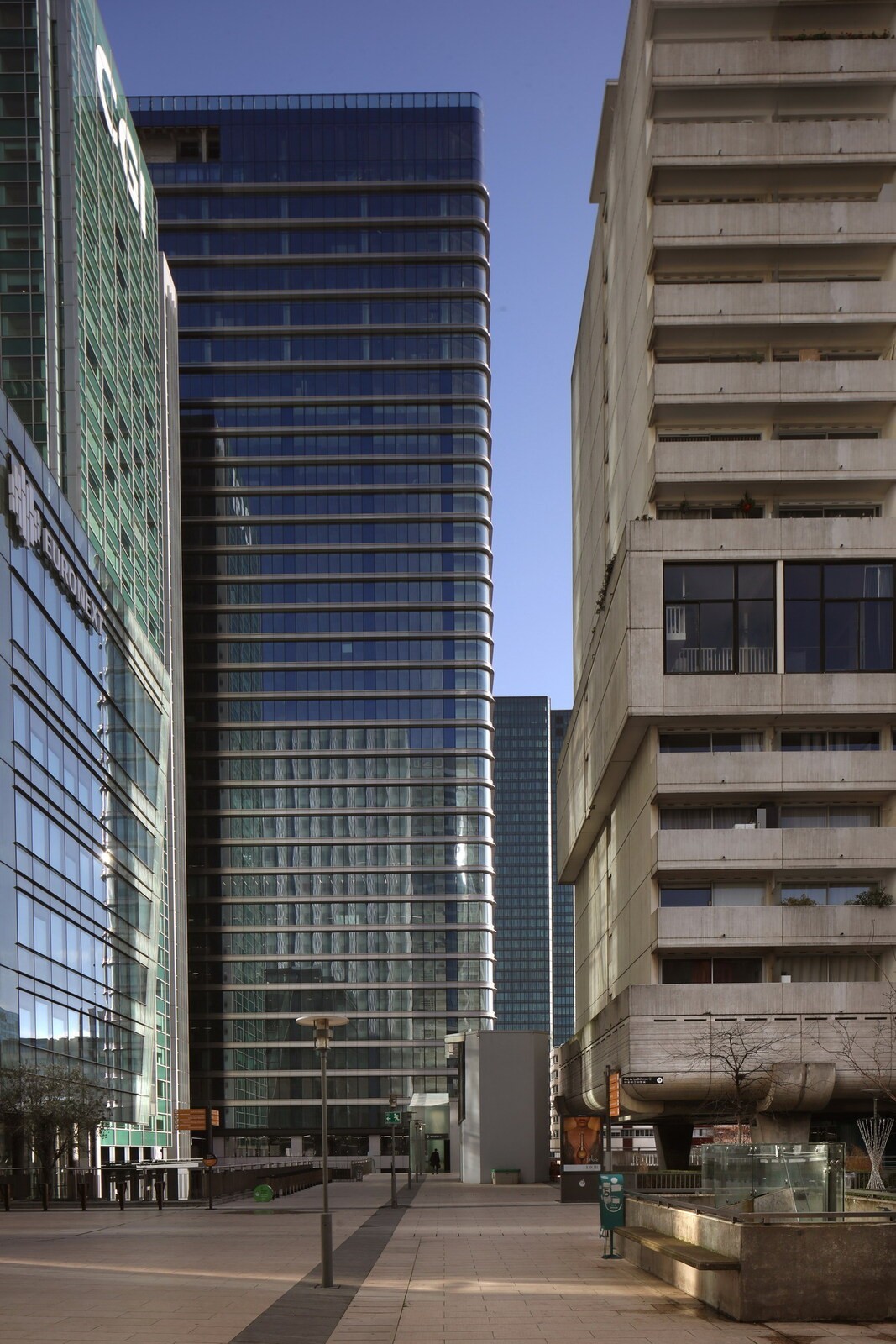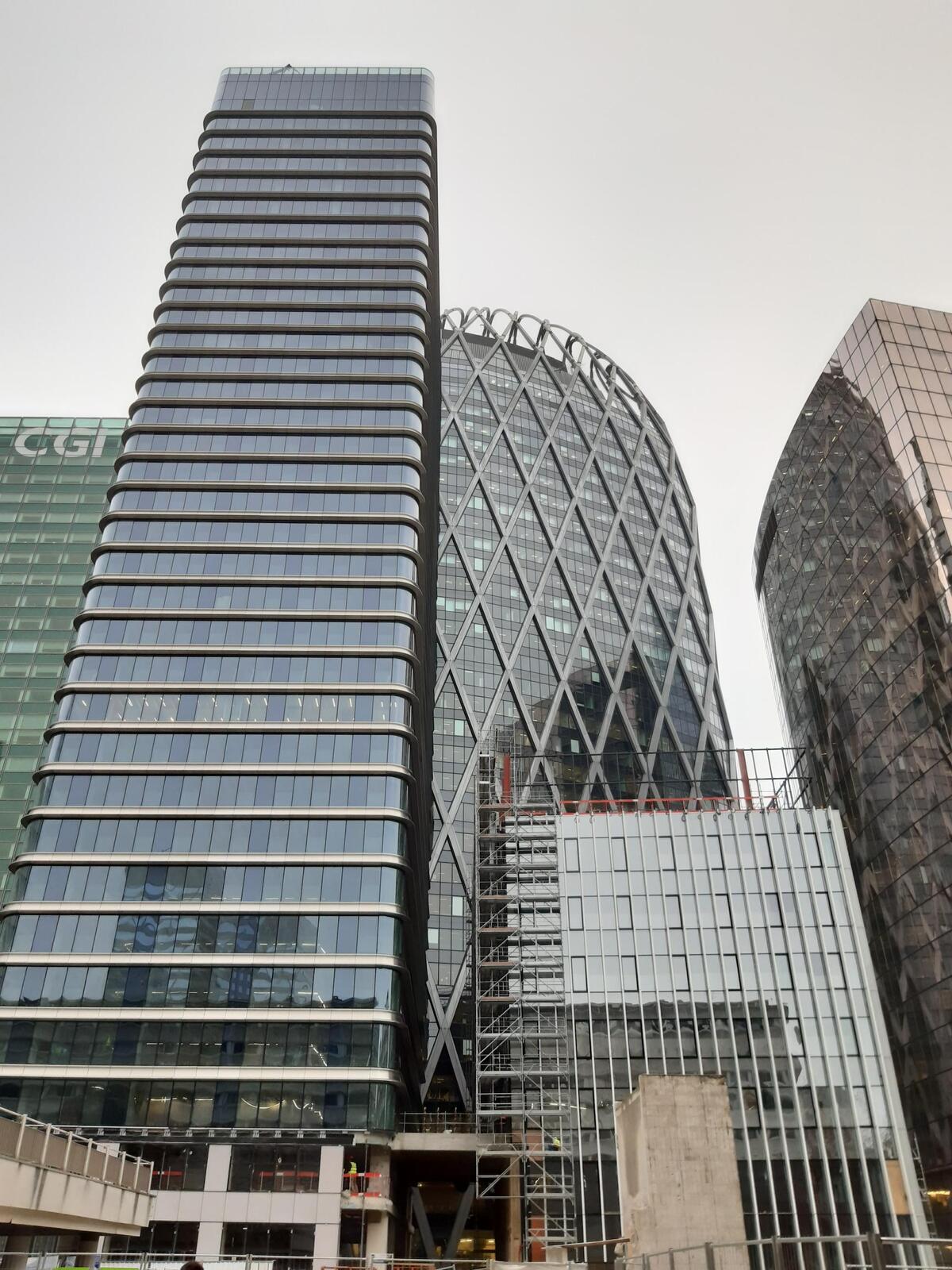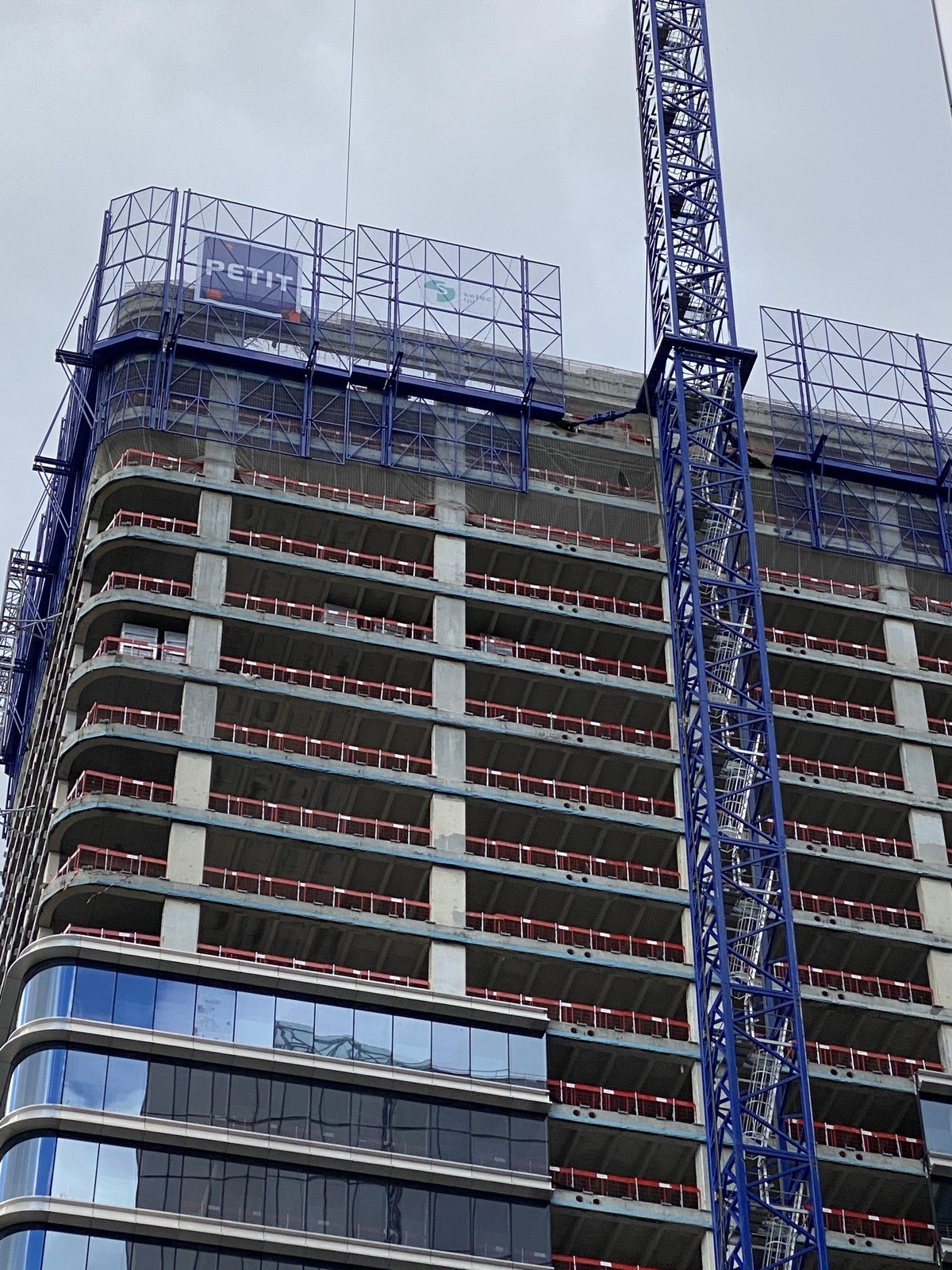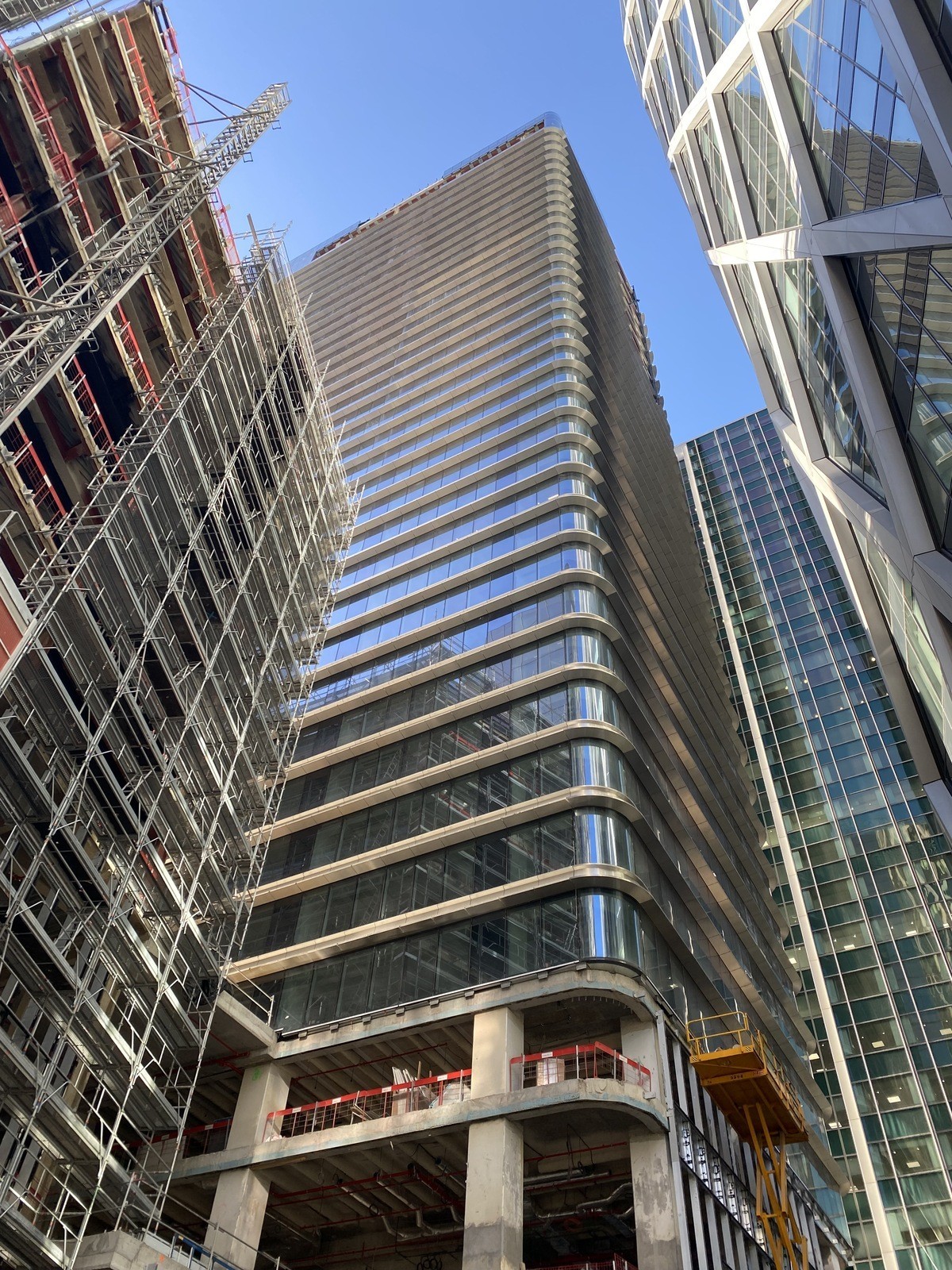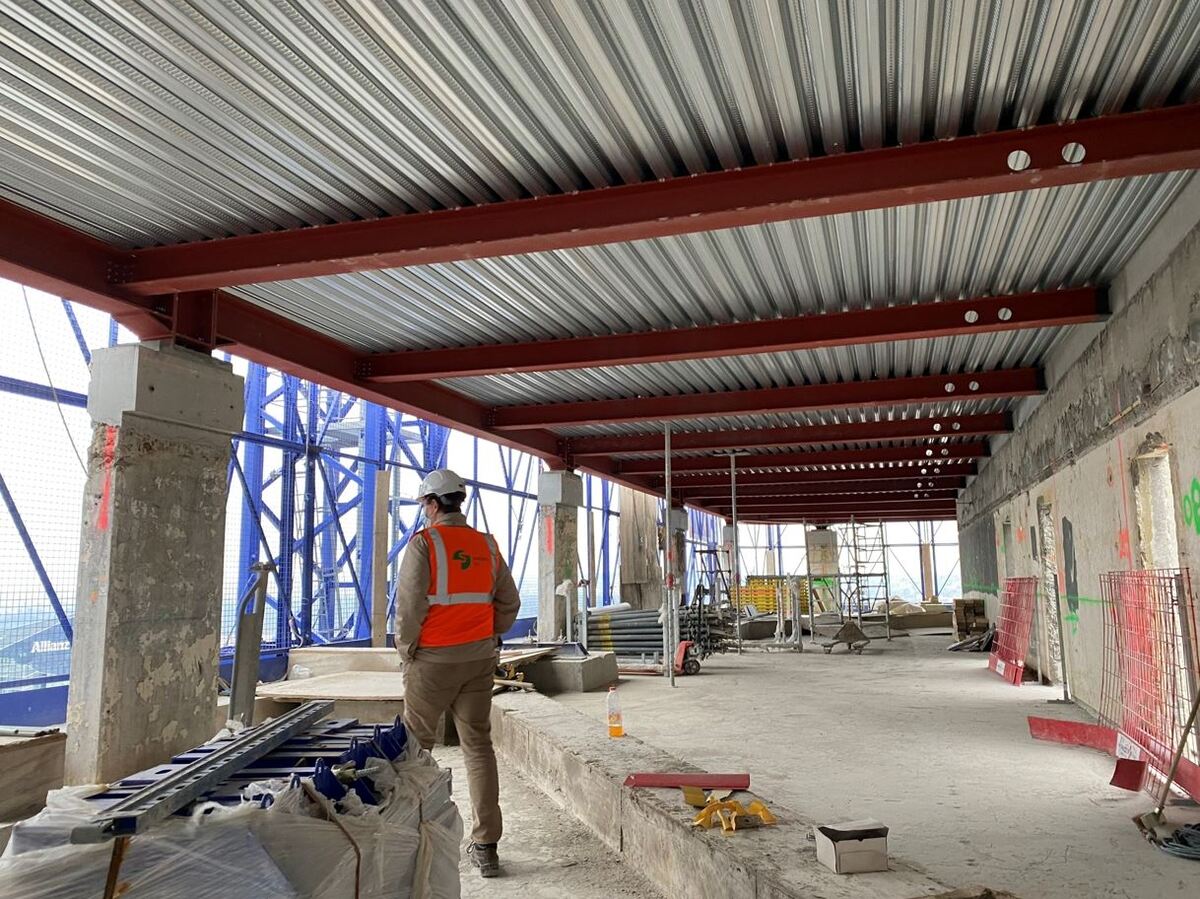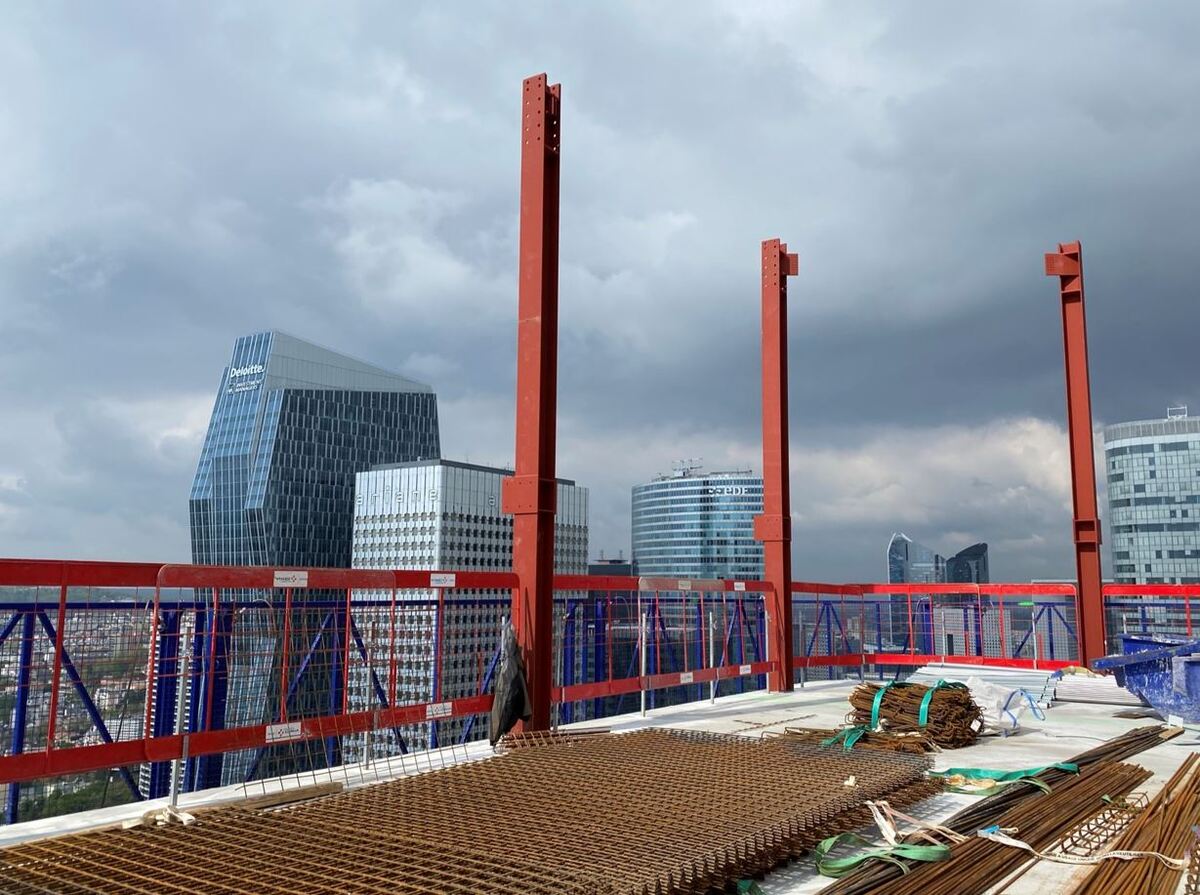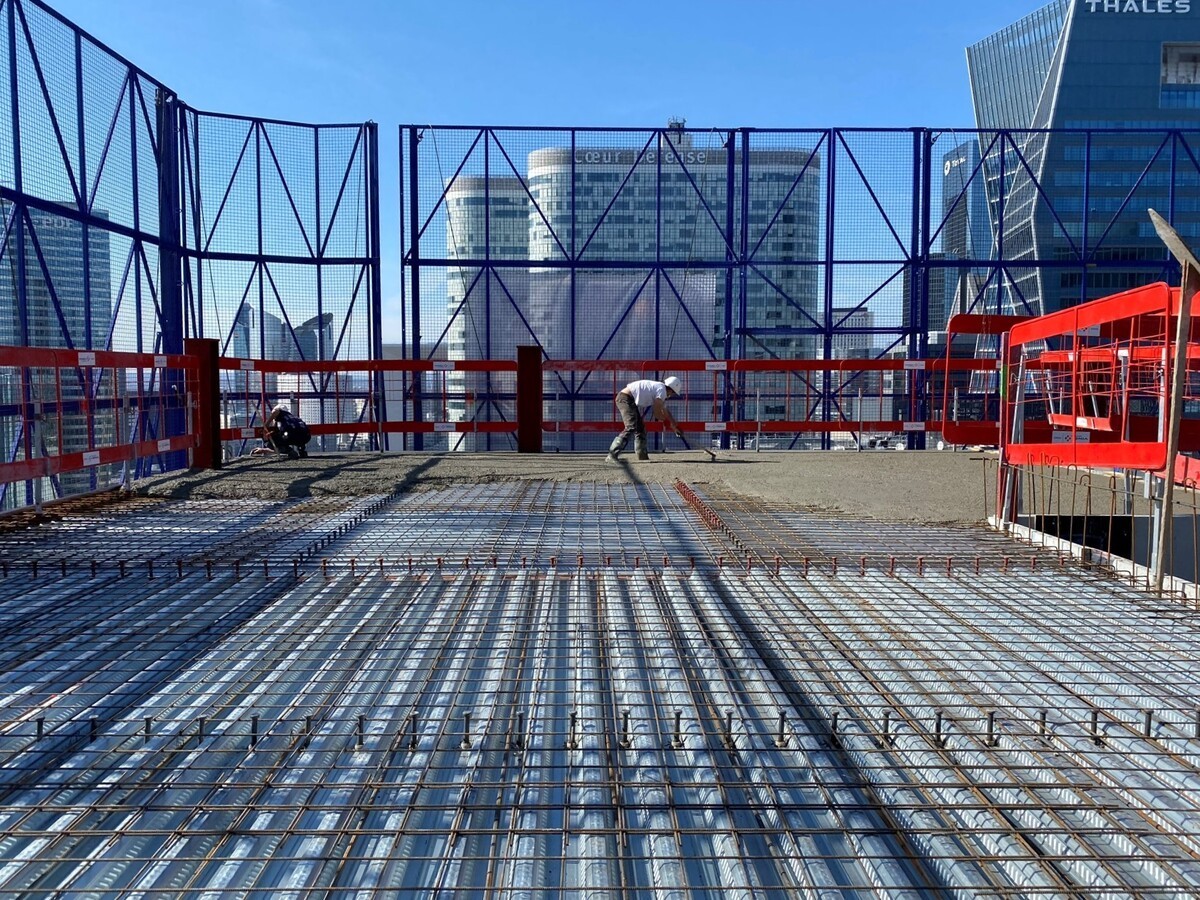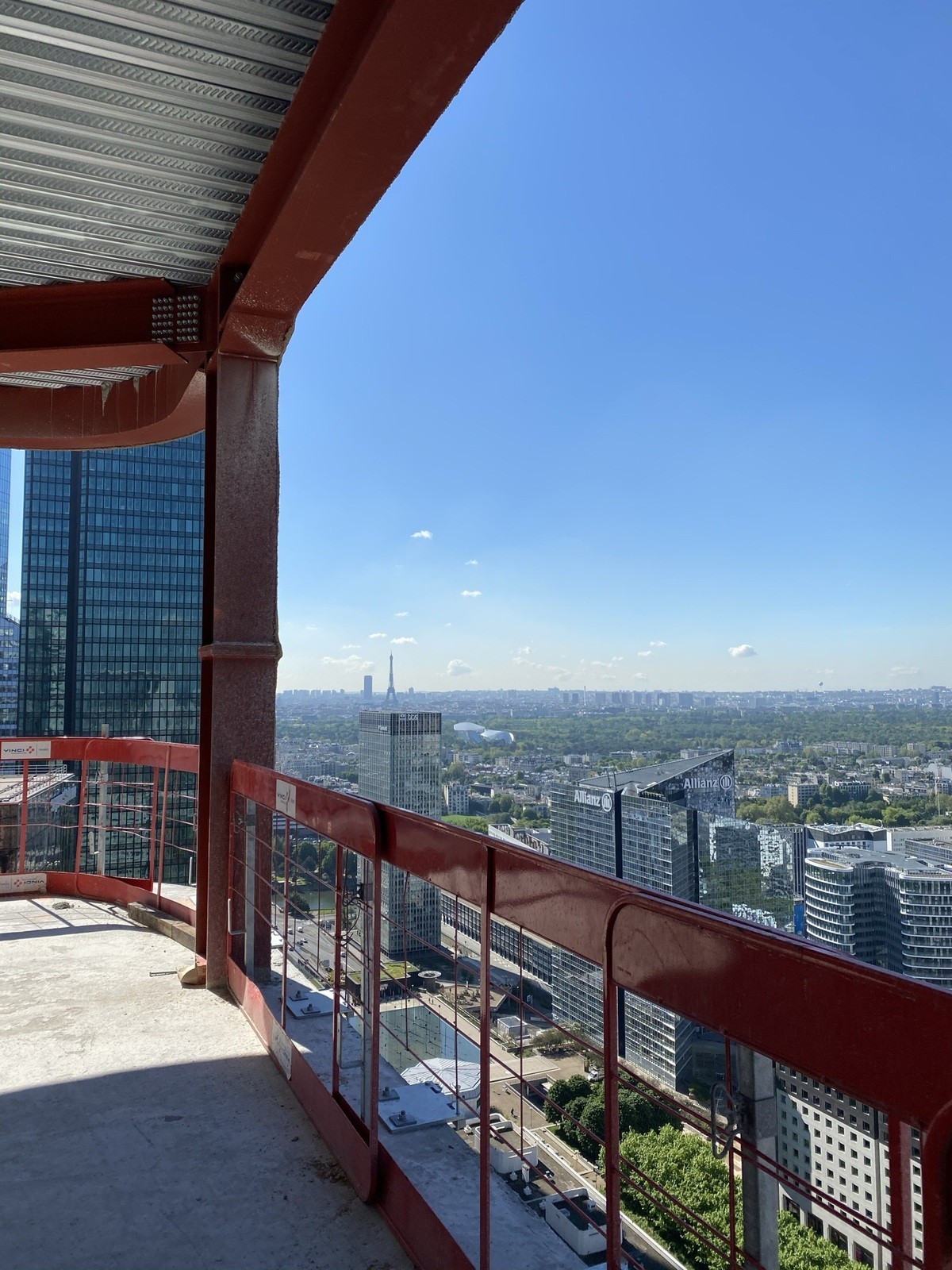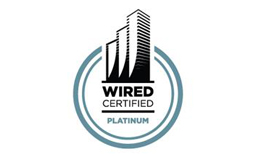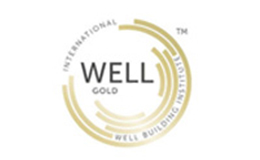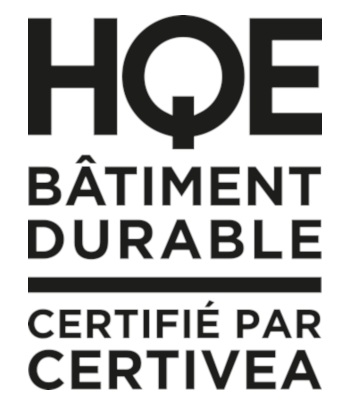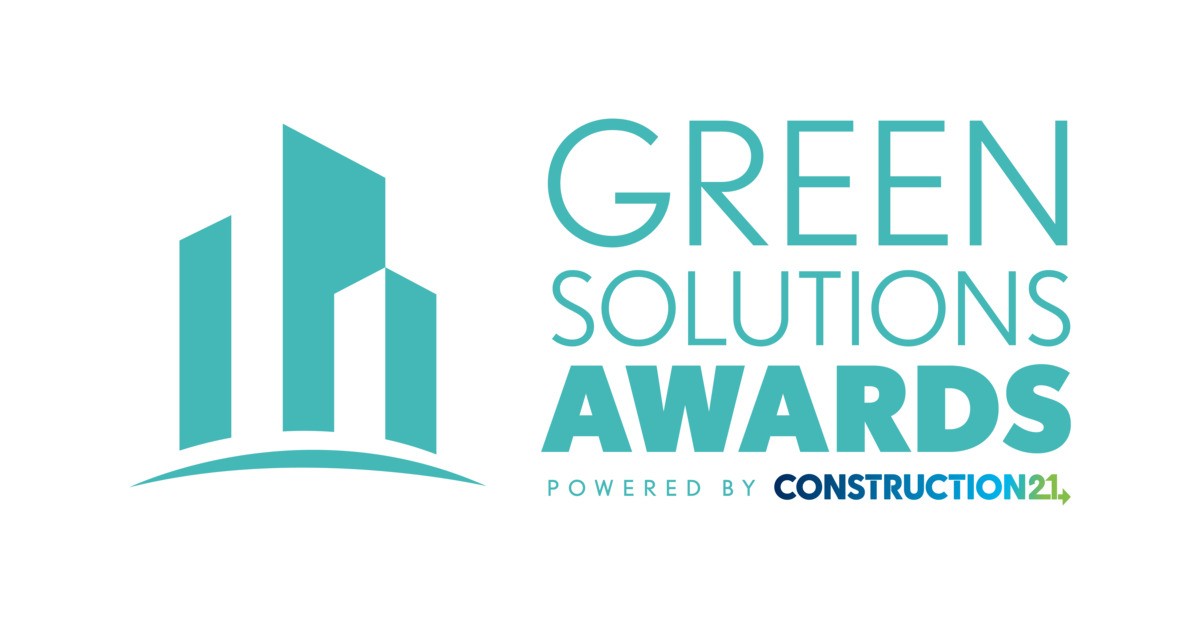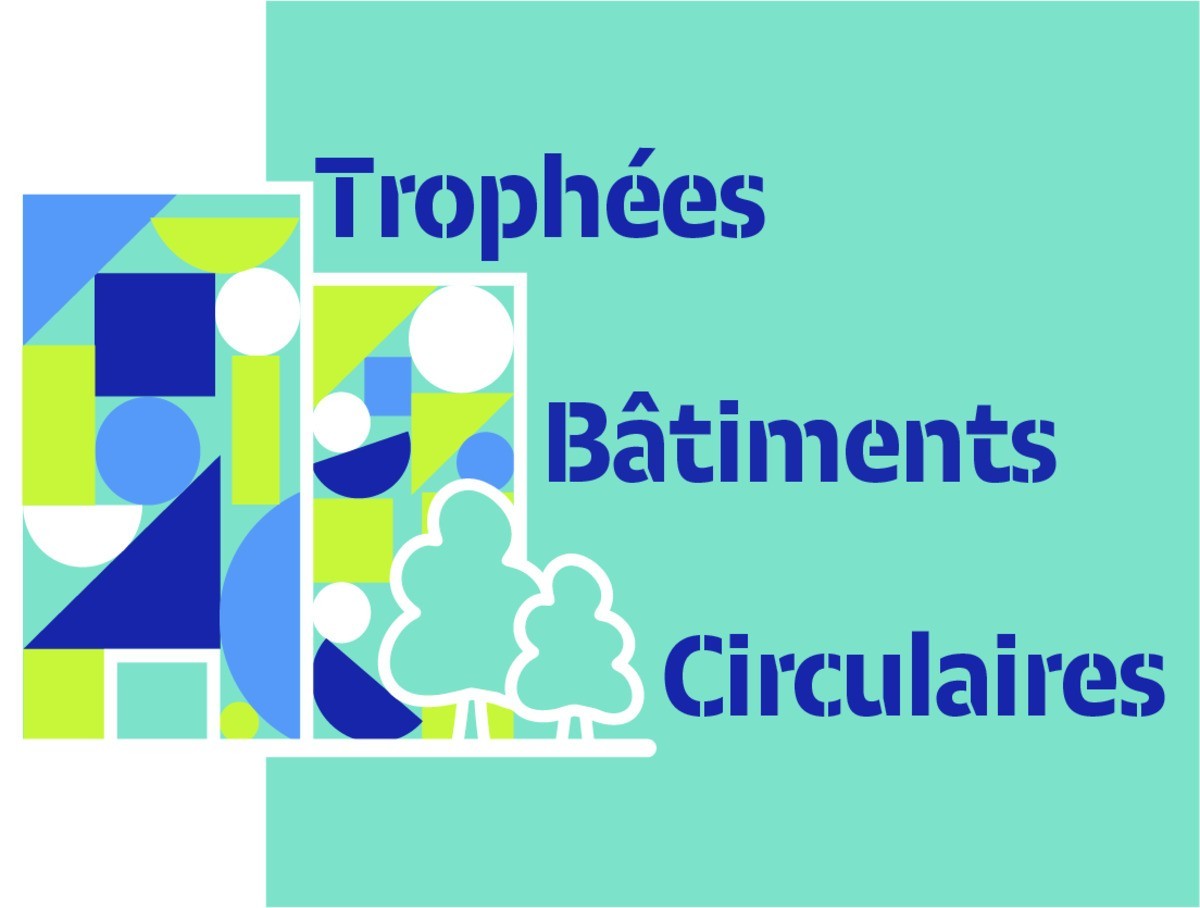The Aurore tower
Last modified by the author on 20/05/2022 - 11:38
Extension + refurbishment
- Building Type : High office tower > 28m
- Construction Year : 1970
- Delivery year : 2022
- Address 1 - street : 18-19 Pl. des Reflets 92400 COURBEVOIE, France
- Climate zone : [Cfb] Marine Mild Winter, warm summer, no dry season.
- Net Floor Area : 38 950 m2
- Construction/refurbishment cost : 99 984 650 €
- Number of Work station : 3 126 Work station
- Cost/m2 : 2567 €/m2
Certifications :
-
Primary energy need
74.38 kWhep/m2.an
(Calculation method : RT existant )
Built in 1970, the Aurore tower is one of the first towers built in La Défense. Abandoned for years, a time destined for demolition, Aurore was finally heavily restructured for a new life :
- A 6-level rise increased the number of superstructure floors from 27 to 33 levels
- The 5 levels of infrastructure and the hall level have been radically redesigned (change of destination, modification of the stairs, etc.)
- The interior of the central core has also been completely redesigned to adapt to changes in elevators, technical trades and new ways of occupying offices.
Aging in the 90s, Aurore was emptied in 1998 to be asbestos removed, its abandonment lasted 10 years. The works permit for the demolition of Aurore and the construction of a new 202metres tower, Air2 is deposited and a demolition permit is displayed on the entrance door of Aurore. The economic crisis of 2008 and the appeals of the residents, will mark in 2017 the abandonment of this demolition / reconstruction, and the entry of a new investor for the realization of a new project more respectful of the existing tower.
See more details about this project
https://www.viguier.com/fr/projets/tour-aurore-courbevoiehttps://parisladefense.com/fr/decouvrir/projets/aurore
https://www.tpi.setec.fr/realisations/tour-aurore-defense
Photo credit
©Aermont Viguier / Sisto Studio / Guillaume Maucuit or ©setec tpi
Contractor
Construction Manager
Stakeholders
Contractor
SNC AER 2
Assistance to the Contracting Authority
ORFEO DEVELOPPEMENT
Morgane Koenig
Assistance to the Contracting Authority
G-ON (étude carbone)
Designer
Agence Viguier
Laure Barthelot, Thomas Poletti
Designer
Sisto Studios
Construction Manager
Artelia Bâtiment Ile-de-France
Structures calculist
setec tpi
François Lebrun
Other consultancy agency
Atys Engineering
Other consultancy agency
Bollinger Grohmann
Others
AE75 (économiste)
Others
SOCOTEC (Bureau de contrôle)
Others
Petit (groupe Vinci)
Energy consumption
- 74,38 kWhep/m2.an
- 149,68 kWhep/m2.an
- 157,59 kWhep/m2.an
Systems
- Urban network
- Urban network
- Urban network
- Double flow
Urban environment
Product
Biomass heating network Idex La Défense (formerly Enerthem)
https://www.idex.fr/
Génie climatique, électricité / Chauffage, eau chaude
The new Aurore Tower is connected to the business district's heating network for the production of heating and domestic hot water.
In 2021, this heating network began its transformation: the biofuel originally used to power the boiler room was replaced by agropellets. Made from raw materials of agricultural origin (green waste, rapeseed or corn straw, miscanthus, walnut shells, olive pits, vine shoots), this solution will ultimately significantly reduce the energy impact of the neighborhood , reducing CO2 emissions by 54,000 tonnes per year.
Construction and exploitation costs
- 99 984 650 €
Reuse : same function or different function
- Structural works
Environmental assessment
- Demolition of the structure and disposal or recycling of materials;
- Construction of a new structure.
Reasons for participating in the competition(s)
We draw attention to two subjects:
Circularity
The hierarchy of waste treatment methods indicates as a priority: prevention of waste generation, then preparation for reuse, then recycling and disposal. The strategy developed for the rehabilitation of the Aurore tower allows significant waste avoidance. The implementation of a structural diagnosis and high-tech strategies made it possible to overcome the obstacles which, for the majority of the works, would have led to demolition. The conservation objective having been achieved, thousands of tons of rubble were avoided thanks to the non-demolition as well as the pouring of a large quantity of concrete for the construction of a new tower.
The rehabilitation of the Aurore tower offers another reading of the circular economy and reversibility. Reversibility is materialized here by the maintenance of existing structures which are doomed, without technical expertise, to demolition. The preservation of existing structures and the material that composes them sometimes requires high technicality to ensure the durability and safety of the structures, and thus extend their lifespan.
Reproducibility
To extend the life of a structure, the auscultation and diagnostic phase made it possible to measure the state of the existing structure, and to identify the margin of action in order to take advantage of it during the elevation project. This phase must make it possible to issue an opinion on the quality of the initial design, to characterize the materials used, as well as to retrace the maintenance and operation of the structure during its first life cycle. This is an essential step to ensure the conformity of the existing structure and authorize the elevation. The very good knowledge of the existing (plans found, numerous reconnaissance campaigns) and the good condition of the structure were decisive.
Innovation
From the outset, the renovation project was imagined by all its designers to be as virtuous as possible in environmental terms. The desire to minimize the reinforcement of the existing structure led to a design of the elevation by means of a mixed light structure compatible with the IGH constraints (steel/concrete with collaborating floor). The number of floors added has been adjusted according to the capacity of the existing structures and by limiting the reinforcements to the raft.
In response to the in-depth diagnosis carried out, the rehabilitation project for the existing structure is carried out by choosing an appropriate solution. The increase in stresses by adding additional floors requires reflection on the exact need: by raising what is necessary and what can be compared to the existing one so as not to generate renovation work. too much reinforcement. The reinforcement solution must be reasonably established so as not to have a high environmental cost in relation to what is preserved. This is why the elevation was limited to 6 floors.
In the same way, the pavilion was designed to respect the existing structures of the car park as much as possible and to avoid inappropriate reinforcement.
Building candidate in the category





